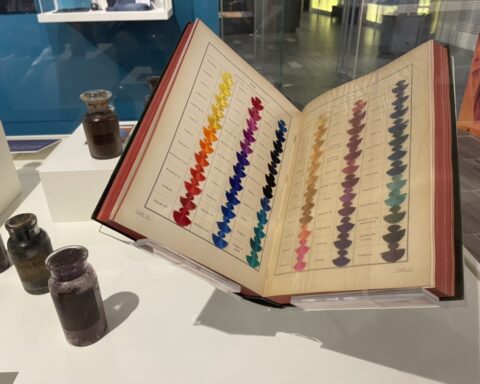
Along with Paris Men’s Fashion Week coverage, the news coming out of the fashion industry from the past week centered around the uncertainty that the second Donald Trump term would bring to fashion. Fashion design brands were upfront about dressing those in Trump’s orbit. For its part, the fashion media took it upon itself to treat this administration as a harmless topic of conversation (see these articles by Vogue, Harper’s Bazaar, and WWD for reference). How fashion industry personnel have treated the new presidential administration is well at odds with the attitude that it took in 2017 toward them, leading some to question whether fashion is giving in to the Trumps at a crucial point in time.
Well, now that we’re through the first week of the second Donald Trump presidency, let’s talk about a point that needs to be communicated: The fashion industry historically has a lot of practice in bending the knee to those in possession of power.
In fact, fashion as an industry got its start as an outgrowth of the royal court of Queen Marie Antoinette, one of history’s most dubious queens. Dressmaker Rose Bertin served the queen from 1774-1792 and was considered her “Minister of Fashion”. Fast forward roughly eighty years to the mid-19th century and English designer Charles Frederick Worth comes into the picture. Worth is the father of the modern-day fashion industry, and he just happened to count Empress Eugenie – wife of French Emperor Napoleon III – as a client. For an industry that began by serving France’s royal family, surely we should not be shocked that it decides to serve power time and time again.
And if you have any doubt in your mind that it does so, there are numerous examples of how it has bent the knee to those holding clout and prestige over time.

Those in fashion showing antisemitism have often been pariahed before subsequently being excused. Former Dior creative director John Galliano was fired in 2011 for making antisemitic comments to diners in Paris’s Le Marais district. Having since apologized profusely, Galliano has been allowed back into the halls of power by both those who would hire him and those who wear his designs. Rapper Kanye West, who also delves into fashion from time to time with his line Yeezy, had multiple antisemitic (not to mention racist) outbursts and found that collaborations with brands such as Balenciaga were canceled before the forgiveness began to roll in. And we haven’t gotten to Coco Chanel, whose Nazi affiliations have become as well-known as her pioneering designs.
The fashion industry often bows to the will of those in its ranks who have been accused of sexual assault. Patrick Demarchelier, photographer to Princess Diana and collaborator of magazines such as Vogue, Elle, and Marie Claire as well as brands such as Dior, Carolina Herrera, and Yves Saint Laurent, was the subject of an extensive investigative report by The Boston Globe in 2018 that interviewed models accusing him of sexual assault. Note that the obituary written by WWD after Demarchelier passed away in 2022 only contains one brief sentence about these allegations.
Designer Alexander Wang, formerly of Balenciaga and currently the head of his namesake brand, was publicly accused of sexual assault towards the end of 2020 and the beginning of 2021 by multiple people; he has since been welcomed back into the fashion fold. Photographer Terry Richardson, who has shot for fashion media such as Vogue, Harper’s Bazaar, and GQ, among others, has continued to field accusations of sexual assault since at least 2005. He might be attempting a comeback if this shoot for Enfants Riches Déprimés recently is any indication. Whether or not the industry widely invites him back remains to be seen, although it will not be a shock if it happens given fashion’s track record on issues of this sort.
Fashion is also infamous for co-opting the identity of others – a practice known as cultural appropriation – and passing those identities off as a trend. The ancestral traditions of one group of people might be fashion’s flavor of the moment. The hairstyles of Black people have been frequently used on fashion runways, as have clothing styles from Indigenous people. When a group of people who has traditionally been seen as the one who holds power over culture and history decides to peel away customs of people who have historically been dispossessed of having power for its own gain, that is an abuse of power. It is exploitation. It is power serving itself for the benefit of those in its own class.

Fashion bends the knee to help itself, as it always has.
In what would appear to be a surprising twist on this concept, fashion has ceded much of its territory to celebrities and the entertainment industry as a whole over the past few decades. Manic Metallic was created, for those who don’t know, as a fashion media company responding to fashion’s allowance of celebrity culture to infiltrate its ranks at the expense of talent native to the industry. We wanted to create an environment that elevates the work of those creatives – designers, photographers, and so on – who have been working away for years to achieve great work for both themselves and the wider fashion community.
The mainstream fashion industry has long since abdicated the responsibility of showcasing the talent and output of people who originate from within its own field. Look no further than the appointment of Pharrell Williams as the creative director for Louis Vuitton’s menswear collection over the many fashion designers who have been working for years to receive an opportunity of that stature. Or the now-omnipresence of celebrities on the covers of fashion magazines. Or celebrities appearing on runways.
But if you look more closely, fashion made this move out of a perceived need to survive. It lost faith in its models, its designers, its executives, its writers, and everyone who wanted to create a better world for the industry (and still do). Fashion made the move to allow celebrity (and now sports stars) figures to take up positions that would normally be reserved for fashion industry workers out of a desire for more power, even if that meant selling out its own workforce. Fashion frequently bends the knee when it is suitable, and it always has.
Fashion has always had a subservient relationship with power. We are in an era, however, where no one can afford to take these self-serving stances. It is not only dangerous to do so, but potentially deadly for many in groups that are not white, straight, or male.
This pattern is tiring, and now is not the time for it.
To subscribe to Manic Metallic‘s Substack newsletter, click here. To follow us on Bluesky, click here.




